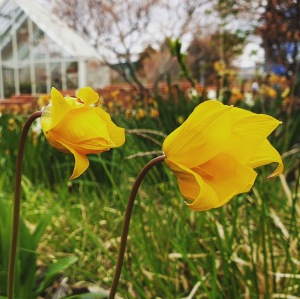Well, no warmer this morning, in fact I had to scrape some ice off the car windscreen before driving up to work. And that keen wind is still there, knocking a degree or two off the ‘published’ temperature.

White Honesty (Lunaria annua var. Albiflora
The bird feeders have been very busy, both at home and at Horatio’s Garden, with Goldfinches particularly abundant. These were unusual birds when I started birding as a schoolboy in the early 70s. In fact, I remember clearly a day when my mother told me about these ‘really exotic looking’ small birds she’d seen in the road not far from our house. I fished out my bird books, and we quickly identified them as Goldfinches, distinctive with their red, black and white faces and gold wing flashes. Nowadays they’re common garden birds for most of us, making the most of humans’ increasing provision of seeds throughout the year. They’re especially fond of sunflower hearts, along with thistle or nyjer seeds – mimicking their natural feeding on teasels and thistles in the late summer. Thinking about it, back in the 1970s, when bird feeding was a very ‘niche’ activity (outside of Mary Poppins, at least) not only were there no foods as exotic as nyjer or sunflower hearts available, feeding was very much a winter activity. Putting out peanuts (one of the bird foods which was available) or any other artificial food between March and October was absolutely the wrong thing to do. We were told that fledglings would choke on these indigestible foods: little realising that birds know perfectly well what to feed their young, and that the adults – run ragged in the effort to keep their young alive and well-fed – benefit enormously from easy access to these energy-rich ‘artificial’ foods during the nesting season.
I haven’t included any pictures in the last couple of blog posts, so here are a couple, linked to plants I’ve written about (I know they’re in the Instagram box on the right hand side of the page, but here they are in bigger, brighter, better versions).

Tulip ‘Brown Sugar

Tulipa sylvestris
